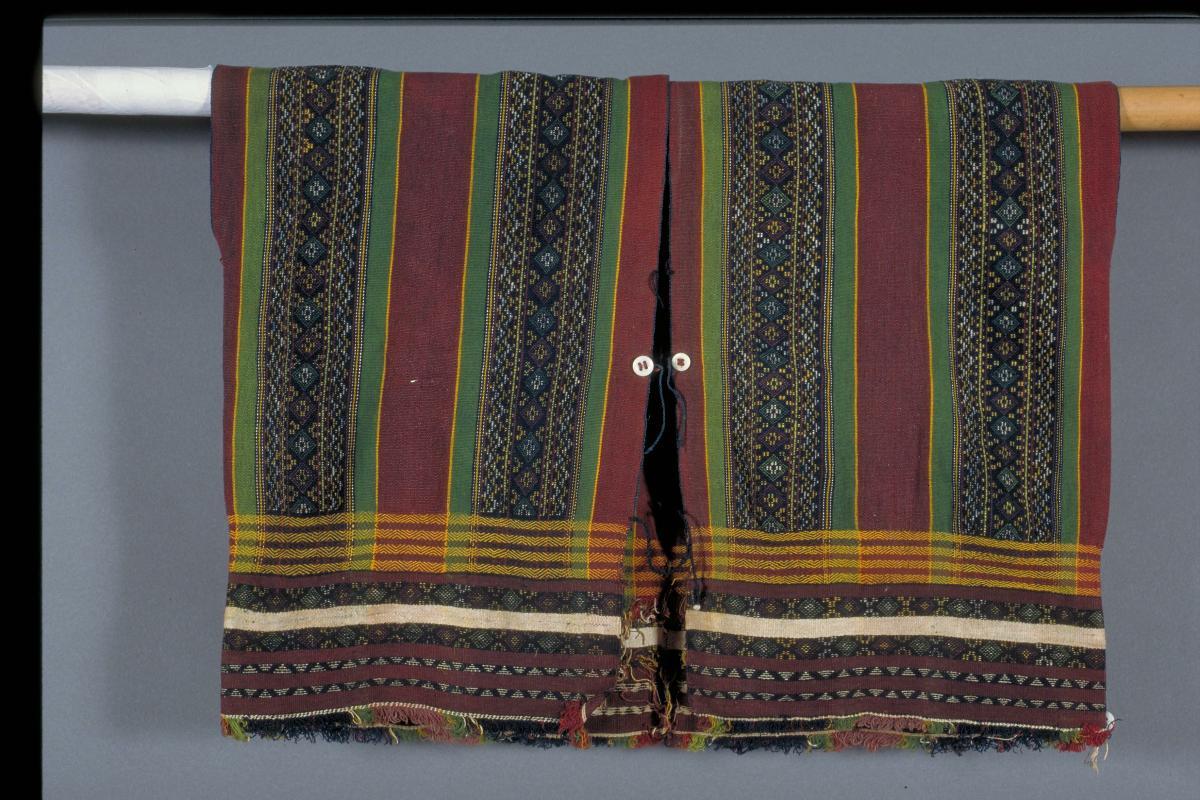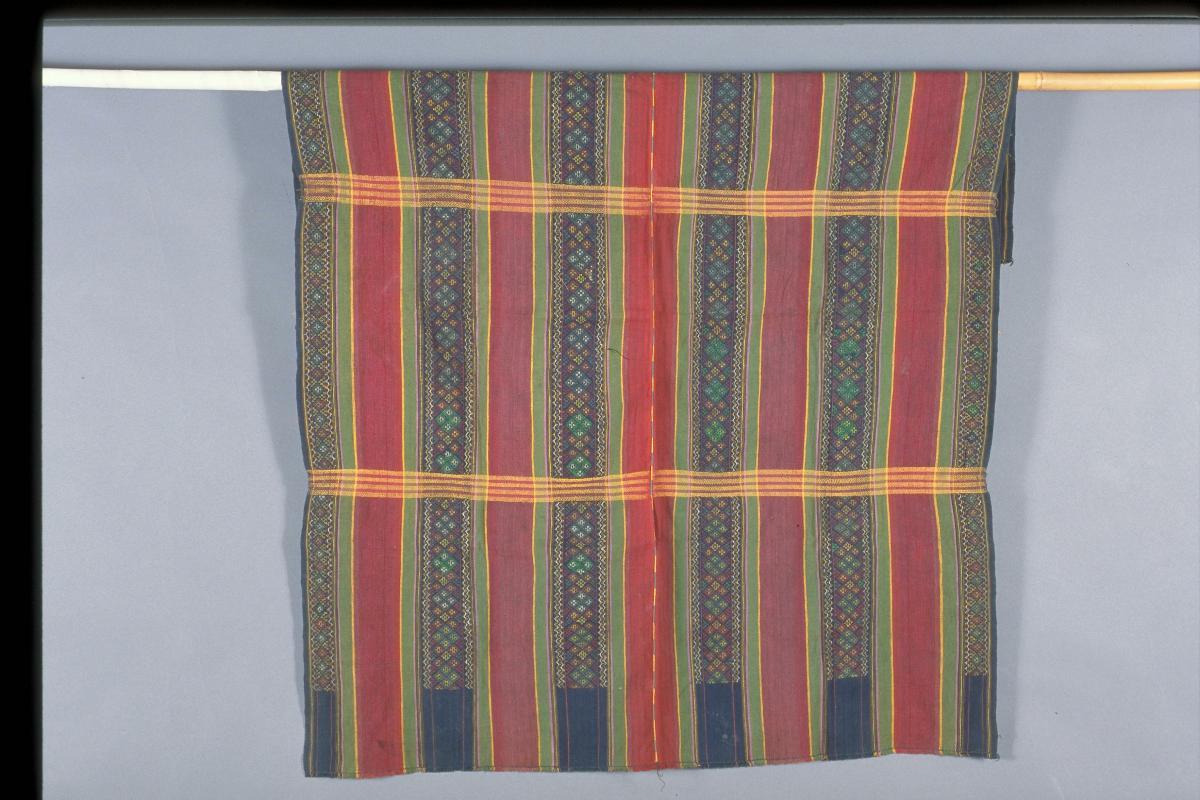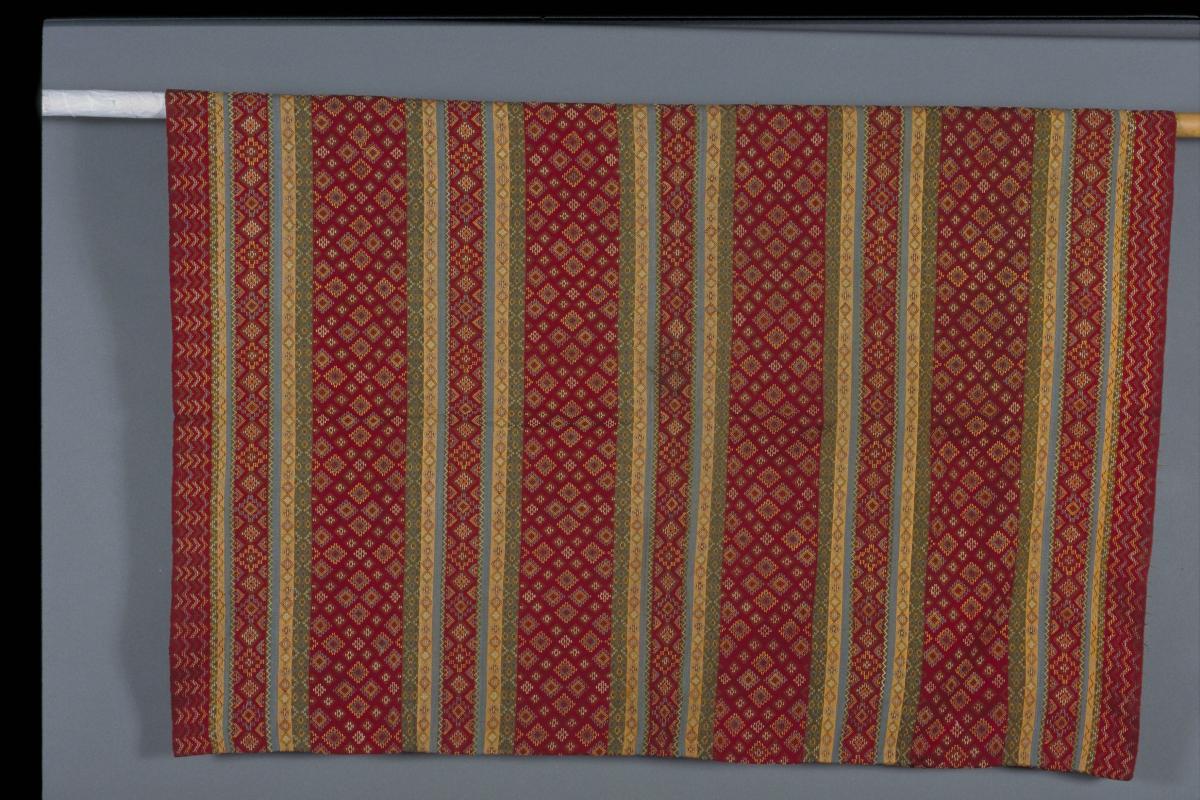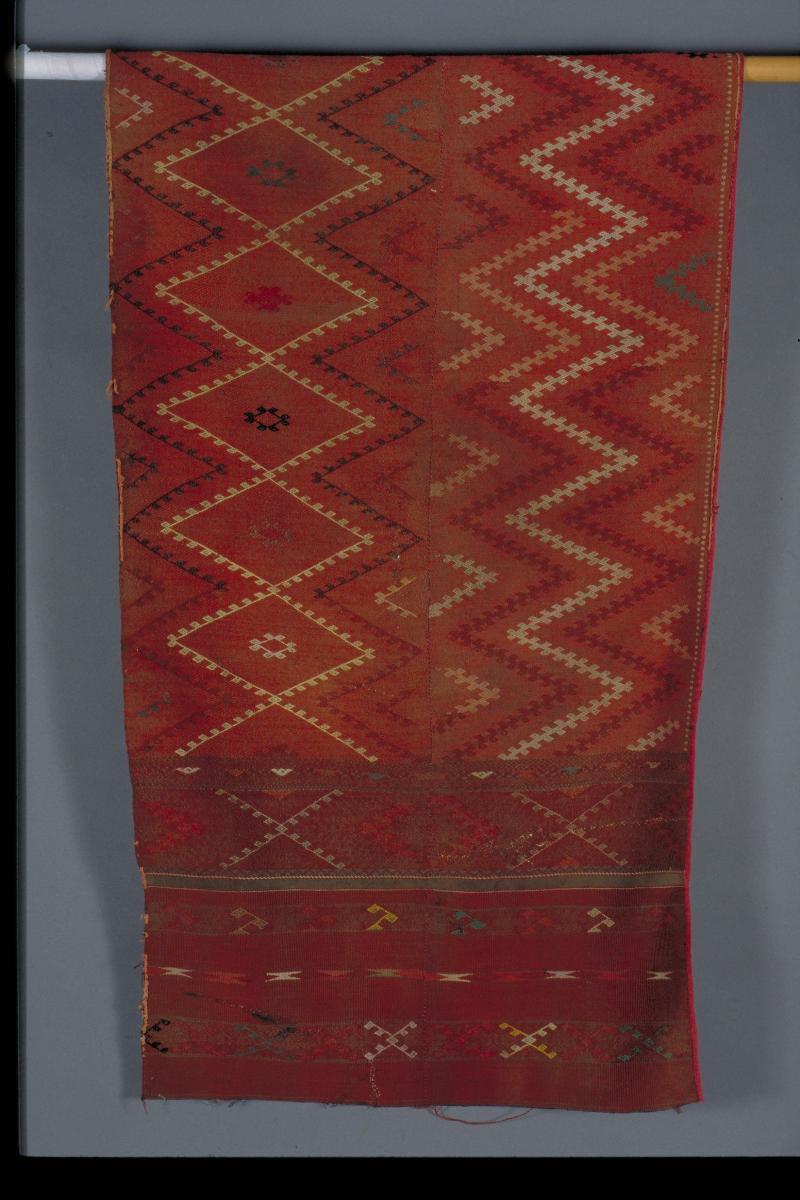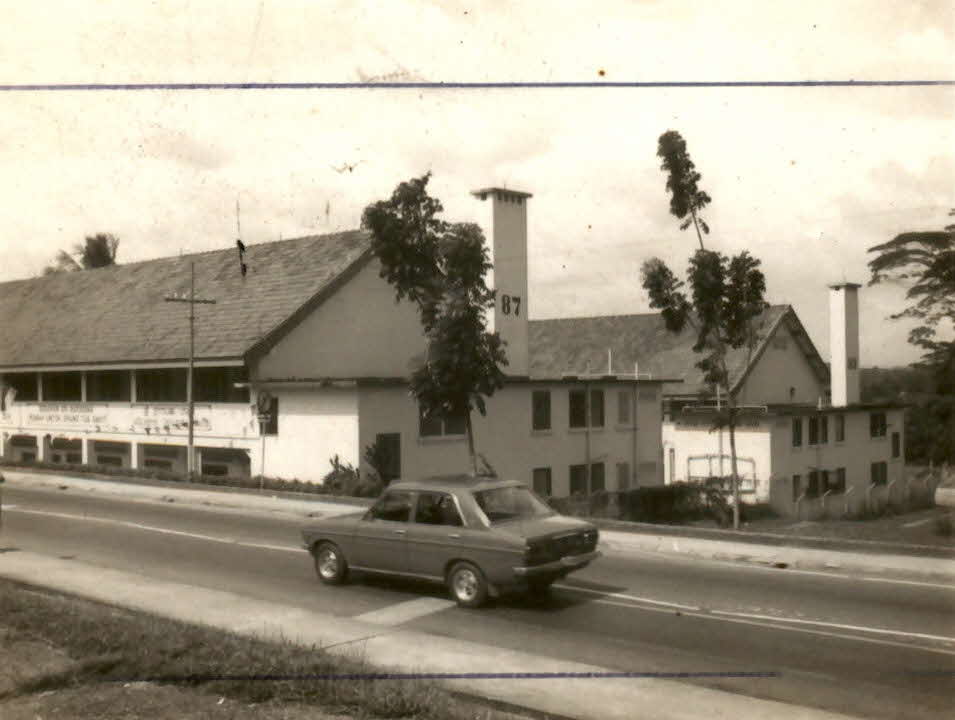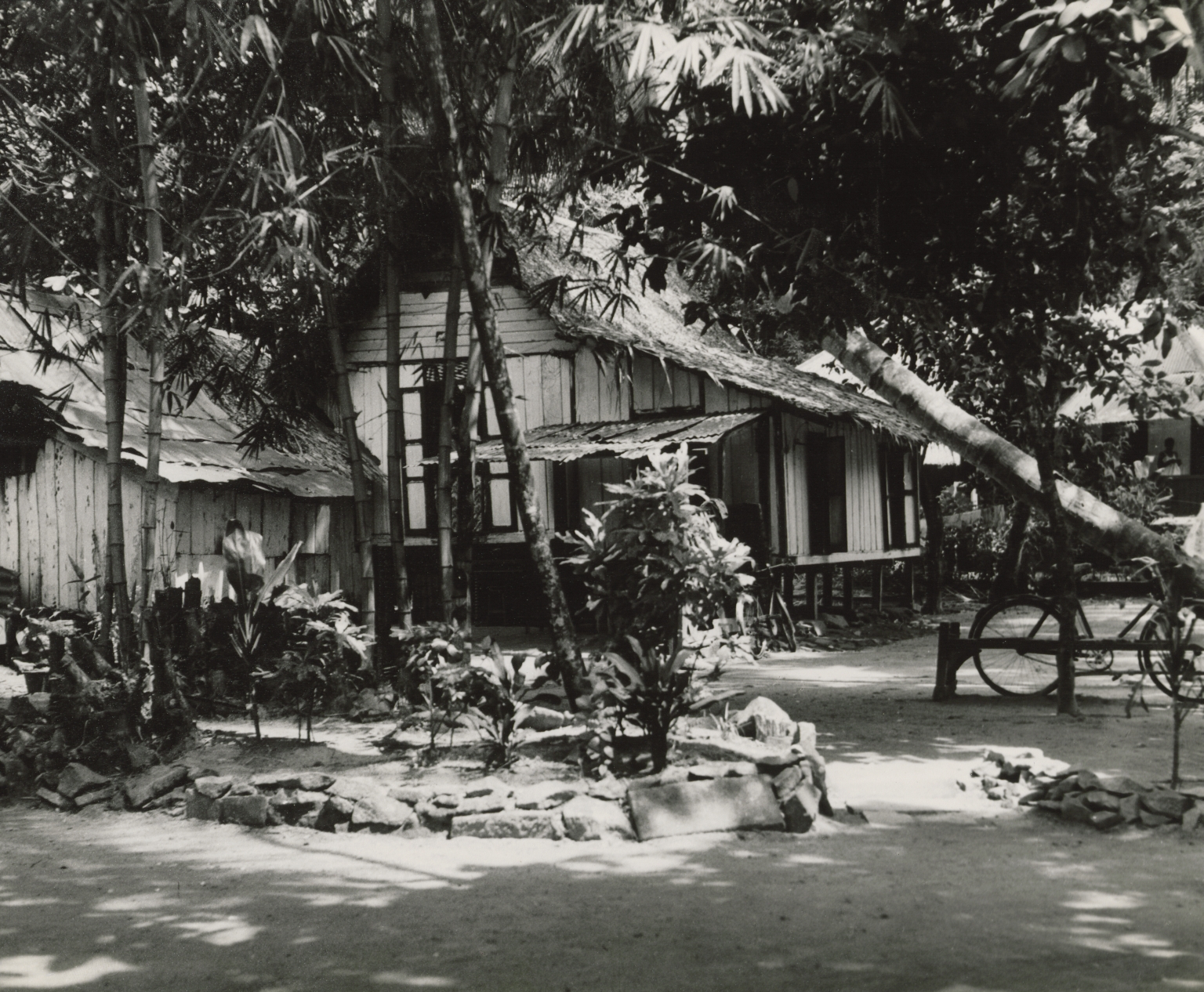This upper body garment, known as kor, was worn with a ceremonial skirt in the by the Haka people and others in the Northern Chin State. It is a tunic that was made by joining two lengths of cloth that were separately woven. The patterns were produced by weaving additional silk threads horizontally across the cloth. This is known as supplementary weft weaving. The subtle diamond pattern in the yellow bands is the result of a complex technique known as twill weaving. The tunic was fastened by tying together loose threads, while the buttons probably remained as decorative features. The tunic was traditionally left open at the front, although by the mid 20th century, there was a preference for using fastenings and the tunic was reversed so that these were done up at the back.




